As Freddie Spencer climbed to the top step of the 1982 Daytona Superbike podium, he knew he was done racing Superbikes. His first year in Grand Prix loomed before him, and he had already tasted Formula 1 perfection aboard the Honda FWS1000. ?He knew what a good racebike should feel like and the CB900F-based Superbike wasn't it.
“It was a handful,” Freddie reflects. “In this corner, it would move around in about six different directions before you could turn it. In that corner, it would move in eight! It was never settled, never calm. I won Daytona on it in ’82 and told Honda I was done with Superbikes.”
At this point, historians are scratching their heads and wondering, "So how did he win Daytona Superbike in '83, '84 and '85?"
“Because in the fall of ’82, I tested the prototype 750 Interceptor at Daytona. I was almost three seconds a lap faster than on the old CB and that was after about six laps! I told Honda I wanted to race Daytona. By March, the bike was really good.”
Honda admits the 1983 750 Interceptor was the first production bike built with racing in mind, but Big Red wasn't alone: Suzuki's '83 GS750 and Kawasaki's '83 GPz750 bristled with race-inspired bits, and suddenly, all of us on Katana 1000s and GPz1100s and XS1100s found our-selves on heavy, wobbly streetbikes. I know because I was 21 years old and even my modded Kat couldn't turn and rev like the shiny red Interceptor my buddy Don Debusk bought.
A 21-year-old street rider in Salt Lake City had just realized what a 21-year-old racer in Daytona knew: The Superbike class that was born in America in 1976 had just become Priority Number One for the Japanese factories.
Those two kids' lives have been massively affected by street-legal superbikes, and we found ourselves at the age of 51 in the paddock of Chuckwalla Valley Raceway surrounded by six of the most significant Superbikes in history: 1986 Suzuki GSX-R750 Limited Edition, 1990 Honda RC30, 1989 Yamaha FZR750RR OW-01, 1992 Ducati 888 SP4S, 1991 Kawasaki ZX-7R and a 1999 Yamaha YZF-R7 OW-02.
Spencer had raced and won on a Two Brothers RC30 in 1991, competing against the OW-01, ZX-7R and 888, but he'd never had a chance to ride any of these other machines. Spencer enjoys motorcycle history and could relate each bike to a rider, guys like Raymond Roche, Kevin Schwantz, Scott Russell, Doug Polen, Doug Chandler, Troy Corser and Thomas Stevens—champions all. Our job was to lap Chuckwalla on these six jewels and compare notes, while benchmarking them against two of the best modern sportbikes available today: the Aprilia RSV4 Factory APRC SE and a Suzuki GSX-R750 Yoshimura Limited Edition. And if you know Freddie Spencer, you know he wasn't going to just cruise around.
In 1986, the first “homologation special” arrived on our shores in the form of Suzuki’s GSX-R750 Limited Edition. Suzuki knew what it wanted to race and created the Limited. To meet the rules, a certain number of bikes had to be sold to the public to “homologate” a particular model, and Suzuki wanted a dry clutch, beefier fork and a tricker, lighter weapon than the standard 750 introduced in Europe in ’85. I first saw the Limited at Laguna Seca during the GSX-R750 press launch, and it will forever be equated with Kevin Schwantz, who was also in attendance. It’s fair to say the focus on superbike weight savings began with this GSX-R, and each of these five other bikes followed in its footsteps.
This bike, owned by Dave Waugh, is no garage queen, with 36mm Mikuni flatslide carbs and a Yosh pipe, and tuning by Matsu, that company's long-time engine builder. You sit on a modern sportbike but in the Limited, the low seat making the reach to the clip-ons extremely comfortable. The bubble surrounds you with the fuel tank between your elbows, and it's an amazingly placid place to spend a few laps. One of the extras on the Limited was a steering damper, but this bike's stability on 18-inch rims makes that part superfluous. The bike soaked up CVR's bumps, and we were both impressed far beyond?expectations.
The three-time GP world champ settled into the older Suzuki and gave the throttle a quick blip, enjoying the rattle of the dry clutch. He knew the Bridgestone Battlax GT tires were designed more for sport-touring than the racetrack, but by the second lap, he was hauling ass by letting the bike turn a bit longer into the corner so he could take away lean angle earlier on the exit. I had the perfect view from the perch of the 2012 model as I watched Freddie carve some shockingly quick laps. When you’re on the wrong tires, it helps to be the smoothest rider in the world.
We both love how narrow this bike feels, and Suzuki’s focus on reducing mass can be felt in every move the bike makes. It is unique in this group due to the seating position, but the bike’s ability to change its line anywhere in the corner really impressed Spencer. “A manufacturer will often have similarities between models,” Spencer said, “and I used to be amazed at how well Wes Cooley could turn his Suzuki GS1000, even on used tires. I feel that same thing with this bike. I know they’re different models, but the way this steers reminds me of watching Cooley late in the race.”
The ’86 rode on the most-narrow rubber (110/70-18 front, 140/60-18 rear) and that sparked a discussion because it was Spencer who led the development of Michelin radial tires, while Kenny Roberts and Eddie Lawson spearheaded that race for Dunlop. When Spencer and Michelin finally got it right, three seconds dropped off the lap time at places like Spa and Hockenheim! Those were heady times and each of us reaps the benefits every time we ride a modern bike.
Before we jump on the RC30 and ZX-7R, a quick note about the 2012 Yosh Limited Edition: absolutely marvelous and a joy to ride. Hard to fault and fun to explore. What it lacks in soul it makes up for in precision. Riding these two back-to-back left no doubt that Suzuki’s commitment to the 750 is as strong as it was at Laguna Seca in 1986.
I witnessed Spencer's first lap aboard the immaculate RC30 (owned by Grant Hellinger of Sea & Ski Marine in Costa Mesa, California) from the seat of Scott Russell's favorite race bike, the ZX-7R, owned by Chris Redpath. The history of these two bikes and these two racers could fill a magazine. Spencer is Russell's racing idol, and the Georgian would study videotape of the three-time world champion and then try to emulate that style on empty backroads. Russell's rise through the ranks includes standing on the Topeka AMA podium and looking over to see his hero next to him. "I just couldn't believe I was standing next to Freddie Spencer," Russell recalled.
In race form, these two bikes gave one another fits. In stock form, too, as Spencer and I discovered. The RC30’s tight seating position holds the rider forward against the tank and Spencer talked about the evolution of ride heights during this time. “We were still running the bikes pretty flat, and keeping the rider forward helped weight the front. The biggest problem with this bike was how it spun its rear. Once it started spinning, it was hard to modulate. It just wanted to keep spinning.”
The RC turns magically and feels small, compact, eager—very special and a little growly as the V-Four does its magic. It works like you expect a Honda would, but there is so much soul to the sound and feel, reminding riders and witnesses that this is one of HRC’s most successful products. Just ask Miguel Duhamel or two-time world champion Fred Merkel—just two of the dozens of riders who made history aboard Honda’s third-gen V-Four. Randy Renfrow won his only Superbike national aboard an RC30.
On paper and in person, the ZX-7R can’t muster the flash and interest of the RC30, but don’t confuse pedigree with lap times. Kawasaki slipped a close-ratio transmission and 39mm Keihin flat-slide carburetors into the R model to give Rob Muzzy and his riders Doug Chandler and Russell an impressive first step toward national and world domination. Russell ruled the world in ’93, and both he and Chandler captured national titles on?this model.
Spencer and I loved the way this bike steered, how balanced it was, how light it felt in transition. This ZX-7R combined light and tactile steering with amazing stability, truly defining “balance” in a motorcycle. We could really relax at the handlebars and let the Bridgestones bite into the pavement. This wasn’t a flicky, short and frisky motorcycle, but a composed bump-gobbling platform that felt wide and solid between the knees and surprised you with its ease at turn-in.
The tall first gear and awkward low-speed fueling I remembered from long ago was a non-issue once we rolled out of the pits. And, as with the Honda, the close-ratio tranny shifted beautifully, but the brakes on this particular Kawi were dangerously wooden and completely lacked any bite. “Reminds me of the brakes early in my GP career,” commented Spencer. “We could get either great feel or long life.” Redpath suspects a problem with the master cylinder. ?Too bad, because if the brakes were on par with the rest of the bike, this thing would be a weapon.
Trading back and forth on these two bikes brought to mind the final AMA round of the 1991 season in Miami. Spencer won the street-circuit race, and Russell remembers it clearly because the Honda’s win took points away from him and helped crown Thomas Stevens as the national champion on his Vance & Hines OW-01. “Freddie was on fire that day,” Russell recalled. “He’d run that thing in there, push the front, pick up the throttle and spin it off the corner. Thomas and I had nothin’ for him.”
For the clearest picture of how far sportbikes advanced in the 1990s, you need to ride these two bikes back-to-back, just as Spencer and I were able to do, thanks to owner (and real-live Hollywood stuntman), Tom McComas. The FZR750RR OW-01 rivals the RC30 in trick-parts-per-inch and traces its roots back to world-level endurance racing just like the Honda, but the feel of the two bikes is decidedly different. As with the ZX-7R, the carburetion on the OW-01 would benefit from a bit of fiddling as each bike could have been optimized with a few quick and easy changes. The 01 surged in the top revs, and I know from experience that this motor can be jetted to pull harder and longer.
The OW-01 has that old-school riding position that purists simply love. The seat is relatively low and so are the clip-ons, with the bubble almost completely engulfing the rider and the footpegs way up high. Those short clip-ons give the bike a hefty steering feel, and again, we find amazing stability and equanimity over the bumps. The bike comes from the factory with an Öhlins damper (with remotely adjustable spring preload!) and a Showa fork, and it was shocking how quickly this bike could be hustled over the bumps. We dialed in all the rear spring we could and would have loved to mess with ride height to lighten the steering, especially after getting off the OW-02, or R7, as it is commonly known.
“We just moved into the modern age,” Spencer remarked after his first three laps on the R7. “This is the first bike that needs a steering damper. It’s also the first bike that is starting to feel fast.” Have you noticed that outright power hasn’t really been mentioned yet? These bikes simply didn’t wow us with their straight-line acceleration, and tests from the day put them through the quarter-mile at speeds around 130 mph. Relatively heavy flywheels are apparent in how slowly these bikes gain rpm, especially the OW-01 and ZX-7R. For comparison, a 2012 GSX-R750 hits 136 mph in the quarter-mile and revs so much more quickly and willingly. And keep in mind that these bikes are 20 years old with tired valve springs and unknown tuning histories. The Ducati SP4S is the only motor that perked up our jaded brains!
The R7, while beautifully sleek in design, appears a bit pedestrian at first glance when compared to the RC and OW-01. The R7 uses stickers where the other two are painted, and there’s a subtlety to it that makes it blend into the crowd—until you ride it. This bike, along with the 888, is fuel-injected and the stumbles and foibles and warm-up of the other older bikes simply aren’t present here. It feels modern in its steering, and we both felt comfortable pushing it hard because there were no reminders of its age. Yamaha did its best to replicate Wayne Rainey’s YZR500 GP chassis, added Öhlins suspension bits and a slipper clutch—all this back in 1999. It feels short, light and strong. No wonder Noriyuki Haga loved it.
"That's one of the best bikes I've ever ridden," stated Spencer as we pried him off the Aprilia. "Hey, Don , show me how to reduce the traction control; it's holding this thing back on the exits." Really? Road Test Editor Canet came over and fiddled around with the dash and all those buttons, and Spencer went out again. Now, the bike would spin and wheelie. Freddie felt right at home.
“This thing feels like an inline-Four the way it makes power,” said Spencer, “but it has the throttle-to-rear-tire communication that I love on the RC30. It’s the way these V-Fours make power that let’s you really feel rear grip. I definitely feel a tie between this Aprilia and the RC30.” Spencer and I both loved the compact feel of this Aprilia, and it’s uncanny how both these V-Four machines feel smaller than their inline-Four or V-Twin competition, regardless of era.
Balz Renggli of Moto Forza in Escondido, California, provided us with a rare 1992 Ducati 888 SP4S, the model Doug Polen won the 1991 and ’92 World Superbike championships on. After the first two corners of Chuckwalla’s fun layout, we knew why. The power is right there, right now, and the brake feel is outstanding. Just as we started to really hustle the bike, the worn Bridgestones let us know the limits were quite low. I pushed the front pretty good and Spencer tucked it completely, showing me the scuff on the knees of his leathers. “Even with the carbon tank, this bike feels pretty tall and really loads the front, so having that old tire on the front is probably the worst combination,” Spencer commented. With better front grip, this Duc would have been a joy on the racetrack.
The riding position wouldn’t be much fun on the street for old wrists, but none of these bikes were designed with the street as a priority. That’s why some of the original tests on these bikes were less than enthusiastic. Back then, I remember trolling along the 405 Freeway and looking like a bobble-head doll even though the ZX-7R’s front compression was at its lightest setting. It was pretty miserable leaving a light, too. The RC30 ran super-hot in traffic, scorching the rider’s inner thighs. The Limited’s dry clutch was prone to grabbiness. After circulating Chuckwalla, I realized that the manufacturers should have only let us ride these homologation specials at a track and in back-to-back comparisons with their plebeian siblings.
The SP4S is close-coupled, like the RC, putting the rider up against the tank, and that single attribute dates the bike more than anything. Modern bikes give the rider so much more room to scoot around, but the 888 and RC (and OW-01 to a lesser extent) had designers who wanted the rider's weight right here. Of all the older bikes, the Duc runs the hardest and owner Renggli told us the entire bike was refurbished by the same Japanese performance shop that fettled Haga's Ducatis. The bike feels sharp and fast, pulling off the corner with an immediacy no other older bike could match and delivering a solid top-end hit due to the race-kit cams and high-compression pistons. Shame about the tires.
Freddie Spencer knew going into Chuckwalla how good these bikes would be. I did not, and frankly, expected much less. “Bike development has always been a balance,” the champ said. “You get more power and that means better brakes are needed. If you gain some lean angle, you need grippier tires. If tire grip improves, a more-rigid chassis is next. By ’83, the factories were paying attention to this balance and every year got better because they kept fixing things at the design level. These six bikes were the best of their particular model, and remember, I raced against all these bikes except the R7. I saw how fast they could go.”
Despite the rarity and value of each bike, Freddie and I were free to run as many laps as we needed. The true value of these soul-filled Superbikes can be felt only while in motion, and that ties into the pilot, too. I worked for Spencer at his riding school for 12 years, and our best times were aboard bikes, circulating a racetrack at speed. At Chuckwalla, I rode six seminal homologation Super-bikes that set the standard for their time with the rider who spearheaded the development of the modern sportbike. Thanks, champ.










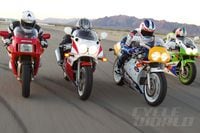
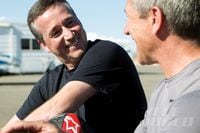
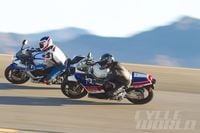
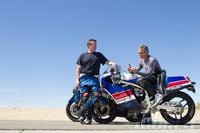
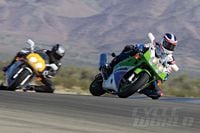
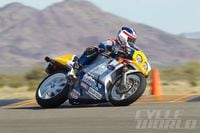
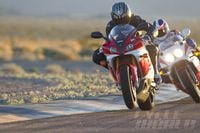
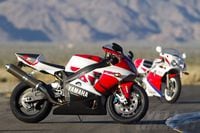
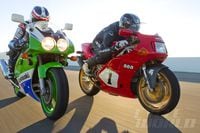
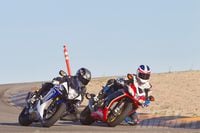
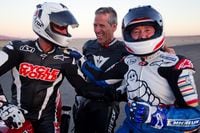

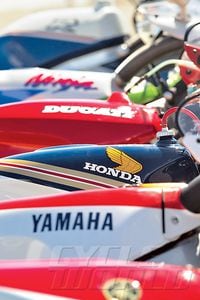
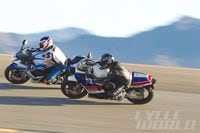
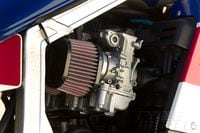
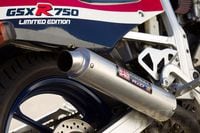
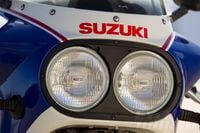
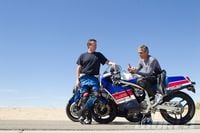
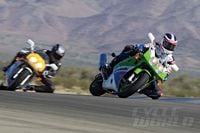
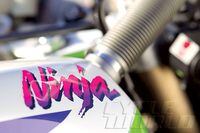
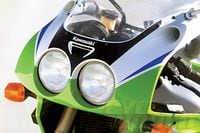
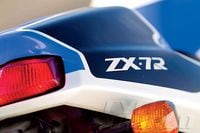
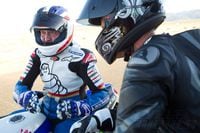
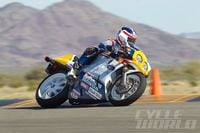
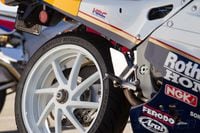
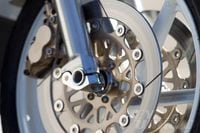
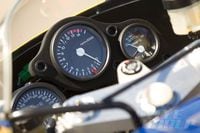
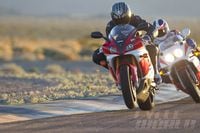
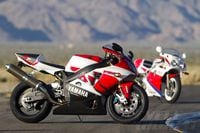
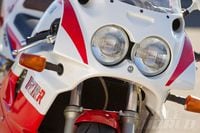
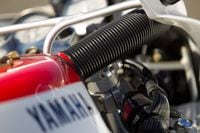
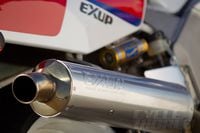
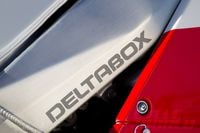
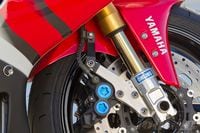
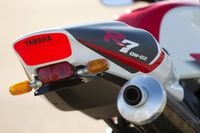
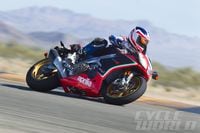

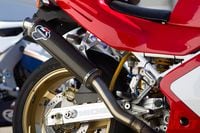
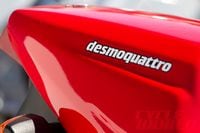
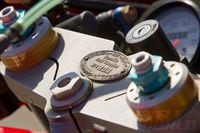
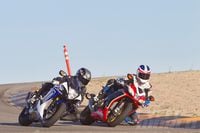
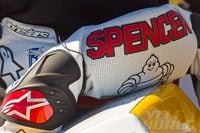
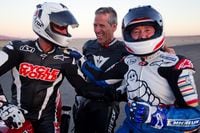
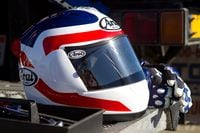

/cloudfront-us-east-1.images.arcpublishing.com/octane/YMWAIPIPSJAOXOU3QMJMGH37OM.jpg)


/cloudfront-us-east-1.images.arcpublishing.com/octane/EJ6KZRGAYBCVXNL2PJXL37UVWQ.jpg)
/cloudfront-us-east-1.images.arcpublishing.com/octane/AAN4TI76M5H5JMUVEIGASWXBDU.jpg)
/cloudfront-us-east-1.images.arcpublishing.com/octane/P3RXD2UCPFF37CMB7CHPVKXORY.jpg)
/cloudfront-us-east-1.images.arcpublishing.com/octane/VZEG2EJI2RDFZNHLRZMU56MD3Q.jpg)
/cloudfront-us-east-1.images.arcpublishing.com/octane/GVJQO5FFOFBWNGODOBRB4FBAW4.jpg)
/cloudfront-us-east-1.images.arcpublishing.com/octane/BIVAK2SFIBDJJM25E7I5VU2FJE.jpg)
/cloudfront-us-east-1.images.arcpublishing.com/octane/CH5VX52UG5CFHOVH5A6UYEFWWA.jpg)
/cloudfront-us-east-1.images.arcpublishing.com/octane/ZVGJNGZRU5C33N7KN23BBFKSC4.jpg)

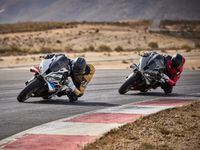
/cloudfront-us-east-1.images.arcpublishing.com/octane/CZ5OM3E43ZEXJHY7LCYXCHLIKI.jpg)
/cloudfront-us-east-1.images.arcpublishing.com/octane/DF5T4K5KPZFJXFCTGPYR77PKJM.jpg)
/cloudfront-us-east-1.images.arcpublishing.com/octane/RMCT2KVQBJHBZMRTSLOVPMOILU.jpg)
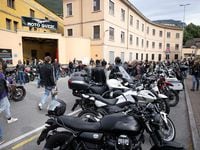
/cloudfront-us-east-1.images.arcpublishing.com/octane/K45KB2XHQVA65DX7VN4ZSMT2BI.jpg)
/cloudfront-us-east-1.images.arcpublishing.com/octane/FNHXQQ56BRD7TO4YIJ453PNG2M.jpg)
/cloudfront-us-east-1.images.arcpublishing.com/octane/OIKJC4JA3ZH7BMKUGWYKBIY5FA.jpg)
/cloudfront-us-east-1.images.arcpublishing.com/octane/MT2SAEWY6FDXFBYSLDE3AEFDTM.jpg)
/cloudfront-us-east-1.images.arcpublishing.com/octane/66UPKPYVURBPRCP5HXSN56MEMM.jpg)
/cloudfront-us-east-1.images.arcpublishing.com/octane/EOREGDSRKFDCRJC6K3EDVHBGCE.jpg)
/cloudfront-us-east-1.images.arcpublishing.com/octane/42RF63Q3LVCMBP3DGTWXFYSMOA.jpg)